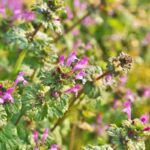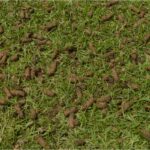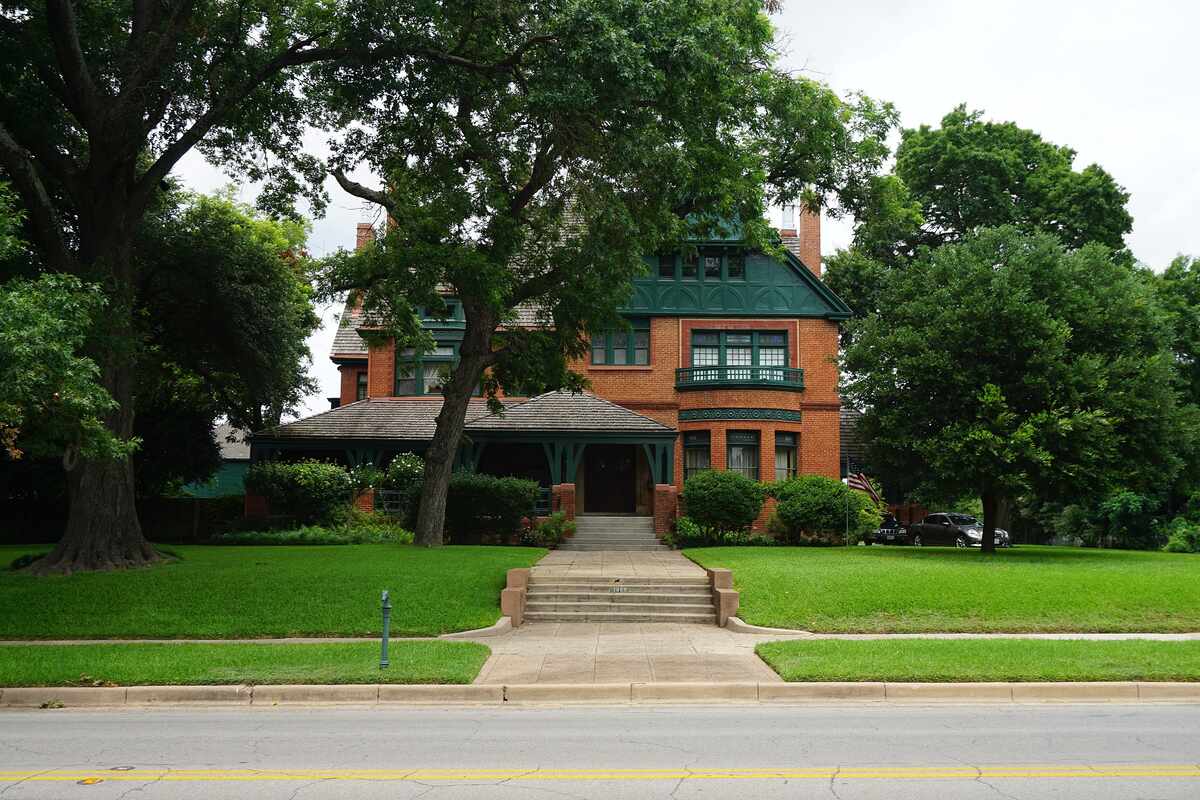
In the heart of Texas, vast skies and prairies stretch endlessly, and hot days beckon us to cool down in nearby lakes. With our list of the best warm-season grasses for Central Texas (and one cool-season grass), your lawn can also thrive in the Texas heat.
Unfortunately, unlike humans who can find respite in a cool lake during scorching hot days, your lawn isn’t afforded such a luxury, and periods of drought can be especially difficult and damaging.
These challenging times can leave your once-lush and vibrant lawn looking parched and lifeless, but choosing the right grass seed for Central Texas is the first step towards a resilient lawn.
Buffalograss
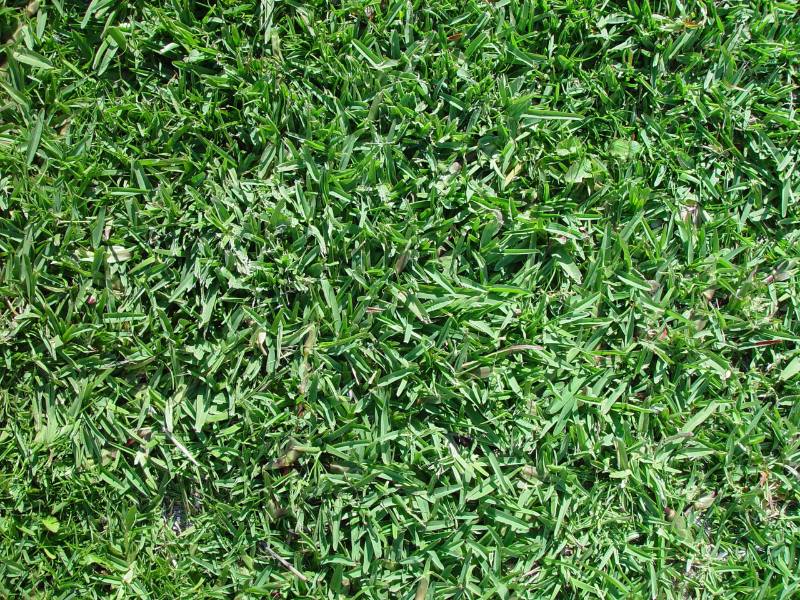
We’ll start off with the most drought-tolerant turfgrass you can find. If you want your lawn to survive extended drought periods, buffalograss is an excellent choice. Like other native plants used in Texas landscapes, this plant thrives in the heat. This warm-season turf is grown throughout Central and West Texas and wins homeowners’ hearts with its practical, low-maintenance qualities.
It won’t require lots of fertilizing or frequent mowing and prefers full sun exposure: perfect for the homeowner who doesn’t want to worry too much about the lawn. When opting for buffalograss, you will need regular weed control for common lawn weeds in Texas.
Buffalograss has very low foot-traffic tolerance. So if you want a lawn where you can have barbecues and run around with the kids, we have plenty of other options for you in this guide.
- Classification: Warm-season grass
- Spreads by: Stolons
- Shade tolerance: Low
- Drought tolerance: High
- Foot traffic tolerance: Low
- Maintenance needs: Low fertilizer and mowing needs. Requires weed control.
- Mowing height: Set the mowing height between 2 and 3 inches.
- Potential for disease: Good tolerance against diseases and insects
- Soil pH: 6.5-7.5
- Soil type: Native clay soils; you’ll need to amend sandy soils
- Other notes: When overwatered, buffalograss is more prone to weed invasions. So turn off those sprinklers, and resist the urge to water frequently.
Grass Seed Options:
– Everwilde Farms Buffalograss Seeds (1 lb. of seeds)
– Buffalograss seed (primed) (5-lb. bag)
Bermudagrass
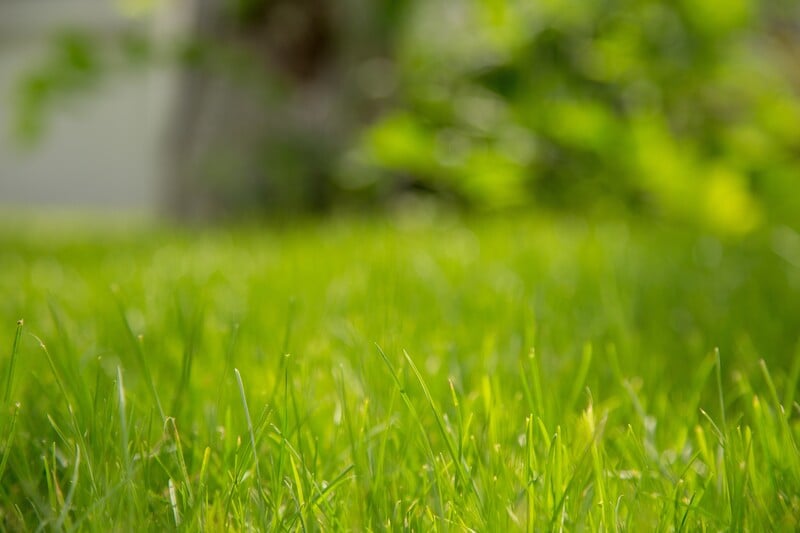
One of the most popular turfgrasses in Texas, Bermudagrass is also well adapted to Central Texas’s drought and heat. And if you really want that barbecue or party on your lawn, Bermudagrass is an ideal choice. Unlike buffalograss, Bermudagrass recovers quickly from damage, making it a great grass for high-traffic lawns.
Now, as with anything in life, this turfgrass also comes with its downsides. The fast growth rate will require you to mow and fertilize your Texas lawn regularly. It also develops thatch, so you’ll have to dethatch during late spring or early summer.
- Classification: Warm-season grass
- Spreads by: Stolons and rhizomes
- Shade tolerance: Low; thrives in full sun
- Drought tolerance: High
- Foot traffic tolerance: High
- Maintenance needs: Needs frequent mowing due to fast growth rate; develops thatch easily; needs regular use of fertilizers for Bermudagrass
- Mowing height: Set the mowing height between 0.5 and 1.5 inches for hybrid Bermudagrass cultivars. Mow common Bermudagrass down to 1.5 to 2.5 inches.
- Potential for disease: Good resistance to disease, although diseases are common; low resistance to insects
- Soil pH: 6-6.5
- Soil type: Tolerates most soil types
- Other notes: Bermudagrass varieties are plentiful throughout Texas. Homeowners can choose varieties based on preferred textures or colors. Just have in mind that the hybrid varieties are best suited to be used in golf courses and athletic fields, like the ones used for the FIFA World Cup fields in 2026.
Grass Seed Options:
– Scotts Turf Builder Bermudagrass (10-lb. bag)
– Hancock Seed Co. Bermudagrass (50-lb. bag)
Zoysiagrass
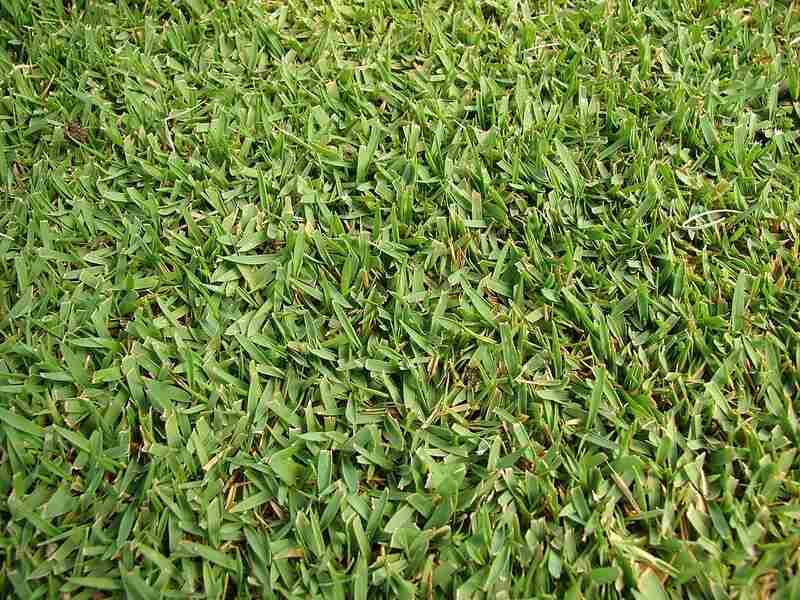
If having to fertilize regularly is an expense you don’t want to have, Zoysiagrass is here for you. Its ability to adapt to different soil types is similar to Bermudagrass, although Zoysiagrass is not quick to establish. It also tends to turn brown sooner and requires some extra lawn care during drought periods.
Overall, Zoysiagrass is a good option for homeowners who want a lawn with a good foot traffic tolerance but low maintenance. It’s important to note, however, that because of its slow growth, it doesn’t recover from damage as fast as Bermudagrass. This makes Zoysia one of the best grass types for dogs or lawns with moderate traffic, where it will have the time to properly recover from damage.
Another appealing quality of this turfgrass is its shade tolerance. If your lawn is surrounded by large trees or buildings and you’re trying to grow grass in the shade, Zoysiagrass might be the right option for you.
- Classification: Warm-season grass
- Spreads by: Stolons and rhizomes
- Shade tolerance: Moderate
- Drought tolerance: Moderate to High
- Foot traffic tolerance: High, but recovers slowly from damage
- Maintenance needs: Low nitrogen fertilization requirements, although it’s prone to thatch build-up.
- Mowing height: Set mowing height between 1 and 2 inches.
- Potential for disease: Good disease tolerance overall
- Soil pH: 6-6.5
- Soil type: Well-draining; some cultivars are more tolerant of a wide range of soils than others.
- Other notes: Zoysiagrass has at least 11 different species that work as turfgrass. Each one has different features that the homeowner can choose according to his needs: improved shade tolerance, different shades of green, or better cold tolerance, for example.
Grass Plug and Seed Options:
– Zoysia Plugs (50 Large Grass Plugs)
– EZPlugs Zoysia Plugs (50 Full & Lush Grass Plugs)
– EZPlugs Zoysia Plugs (100 Plugs)
– Zenith Zoysia Grass Seeds (1/8 lb. of seeds)
Texas Bluegrass
The only cool-season grass on this list is a cross between native Texas bluegrass and Kentucky bluegrass (KBG). It has the aesthetic appeal of Kentucky bluegrass, producing beautiful dark green lawn grass, but not the traffic tolerance. So, Texas bluegrass is best suited for those who want a beautiful landscape for a home lawn rather than a high-traffic, everyday-use yard.
Texas bluegrass can stay green all year-round since it’s well adapted to the Texas heat and sun. Plus, with its low water needs, you won’t have to install a sprinkler system for it to grow. It has moderate maintenance needs and can be a good choice for lawns with shady areas since it tolerates partial shade.
- Classification: Cool-season grass
- Spreads by: Rhizomes
- Shade tolerance: Moderate
- Drought tolerance: High
- Traffic tolerance: Low
- Maintenance needs: Moderate; low watering needs; requires frequent mowing and more fertilizing than tall fescue
- Recommended mowing height: Set the mowing height between 2 and 2.5 inches; during periods of high heat, increase the mowing height to 3 to 4 inches.
- Potential for disease: Moderate. It is resistant to brown patch but needs dethatching every year.
- Soil pH: The optimal soil pH range is from 5.7 to 7.0
- Soil type: Alkaline soils can cause iron deficiencies, turning the leaves pale. It does best in acidic soils.
- Other notes: Texas bluegrass is suitable for partially shaded areas, while also being more heat and drought resistant than other cool-season options, such as fescues.
Honorable Mention: St. Augustinegrass
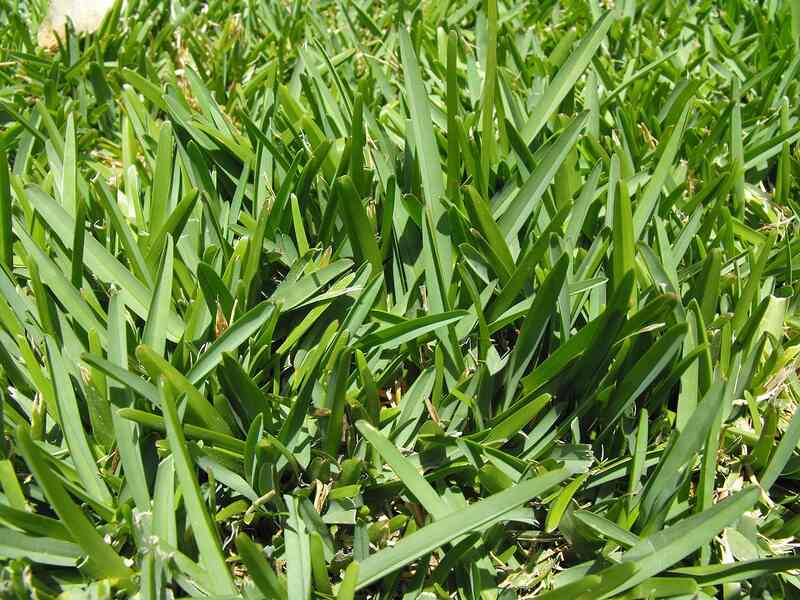
While St. Augustinegrass might need extra sips of water to grow strong amidst the Central Texas heat, it is a viable option for homeowners who are willing to take this extra step, as this grass type is on the higher-maintenance side. In Texas, you’ll need to aerate your lawn in late spring or early summer as St. Augustine doesn’t tolerate compacted soil well.
With moderate shade tolerance — the best among warm-season turfgrasses — St. Augustinegrass is a quick grower. And as such, it will need frequent mowing. Besides that, it will also require regular fertilization and dethatching. When well cared for, it produces a lush and beautiful green cover.
- Classification: Warm-season grass
- Spreads by: Stolons
- Shade tolerance: Moderate. It is the most shade-tolerant warm-season grass.
- Drought tolerance: Moderate to High
- Foot traffic tolerance: Low
- Maintenance needs: Needs frequent mowing due to fast growth rate; develops thatch easily; needs regular fertilization
- Mowing height: Set the mowing height between 3.5 and 4 inches.
- Potential for disease: Moderate to high
- Soil pH: 6-7.5
- Soil type: Tolerates many soil types; prefers moderately fertile and moist (not waterlogged) soils; doesn’t tolerate soil compaction
- Other notes: St. Augustinegrass does not tolerate harsh winters or foot traffic.
Grass Plug Options:
– Seed Ranch St Augustine Seville Grass Plugs (2 Trays)
– Seed Ranch St Augustine Floratam Grass Plugs (2 Trays)
How to Choose the Best Grass for Central Texas
To choose the right turfgrass for your lawn, consider these criteria before you make a final decision:
Shade Tolerance
Is your lawn in an area with full sun exposure or in partial shade? Consider whether you’re landscaping for shade or have a yard with plenty of sunshine. Opt for a grass that can thrive in the light conditions in your yard:
- Low shade tolerance: Bermudagrass, buffalograss,
- Moderate shade tolerance: St. Augustinegrass, Texas bluegrass, Zoysiagrass
Drought Tolerance
As Texans know, drought periods can be harsh not only on people but on lawns as well. How much time and effort are you willing to spend during these periods to keep your lawn well maintained? If you don’t plan on spending much, grasses with a high drought-tolerance might be the best for you.
- Moderate drought tolerance: St. Augustinegrass, Zoysiagrass
- High drought tolerance: Bermudagrass, buffalograss, Texas bluegrass
Foot Traffic Tolerance
How do you plan to use your lawn? Do you prefer keeping it tidy to increase your home’s value, or do you intend your lawn to be a fun zone for family and friends? Choose a grass that’s best suited for your plans.
- Low traffic tolerance: Buffalograss, St. Augustinegrass, Texas bluegrass
- High traffic tolerance: Bermudagrass, Zoysiagrass
Maintenance Needs
And last but not least, think about the amount of time and financial resources you are willing to spend on your lawn. Are you looking to have a low-maintenance landscape in Georgetown or surrounding areas? There are options for every maintenance level:
- Low maintenance needs: Buffalograss
- Moderate maintenance needs: Zoysiagrass, Texas bluegrass
- High maintenance needs: Bermudagrass, St. Augustinegrass
Need a Helping Hand?
We’ve got you covered. If you’re looking for a Texas lawn care pro near you, we have trusted lawn care pros in Georgetown, Austin, Round Rock, San Marcos, Cedar Park, and many more cities across the Lone Star State.
LawnStarter participates in the Amazon Services LLC Associates Program, an affiliate advertising program. LawnStarter may earn revenue from products promoted in this article.
Main Image Credit: Michael Barera / Wikimedia Commons / CC BY-SA 4.0


